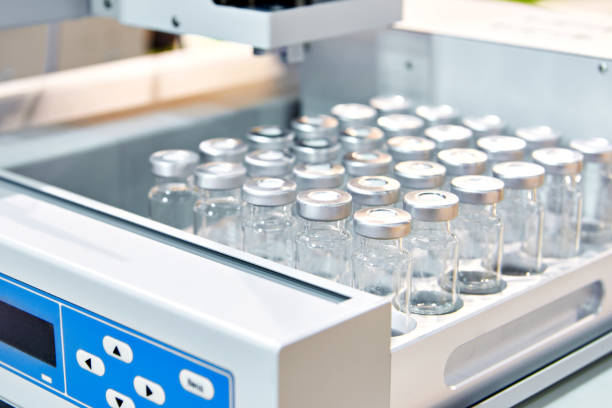1,3-Dichlorobenzene

Parameter Type: Drinking Water Testing for Volatiles
Parameter Name: 1,3-Dichlorobenzene
What it is and Where it Comes From:
1,3-Dichlorobenzene is an organic compound with the formula C6H4Cl2. It is the least common of the three isomers of dichlorobenzene, it is a colorless liquid that is insoluble in water. It is produced as a minor byproduct of the chlorination of benzene, but can also be prepared in a directed manner by the Sandmeyer reaction of 3-chloroaniline. It also arises from the isomerization of the other dichlorobenzenes at high temperature. Drinking water testing gives you several benefits like peace of mind, identifying contaminants in your water, and insight into health concerns. Safe Home offers Laboratory drinking water testing kits for 1,3-Dichlorobenzene, allowing you to collect your water sample and ship it directly to our EPA-Certified Laboratory. This platform of drinking water testing for 1,3-Dichlorobenzene will give you an accurate level based on the lowest level of a parameter our instruments can detect (Method Detection Level). Safe Home drinking water testing for volatiles can be used for city and well water supplies. Drinking water testing should be done any time you notice a significant change in your water quality.
Health Effects:
: 1,3-Dichlorobenzene may affect the liver and kidneys. Exposure to 1,3-Dichlorobenzene can cause headaches, drowsiness, nausea, vomiting, diarrhea, and abdominal cramps. 1,3-Dichlorobenzene may damage the red blood cells leading to low blood count (anemia). There is no evidence that 1,3-Dichlorobenzene causes cancer in animals.
Solutions to Contaminant Levels:
After drinking water testing, what is the next step? Reverse osmosis is a process that removes foreign contaminants, solid substances, large molecules, and minerals from water by using pressure to push it through specialized membranes. Here’s how reverse osmosis works. Unlike osmosis, which is a passive process, reverse osmosis requires external force (pressure) to work. Pressure is applied to a highly concentrated solute solution, such as salt water, to pass through a membrane to a lower concentrate solution. The membrane allows water to flow through but blocks out larger molecules, like contaminants. The reverse osmosis process leaves higher concentrations of solute on one side and only the solvent, or freshwater, on the other. Carbon filtering is a method of filtering that uses a bed of activated carbon to remove impurities from a fluid using adsorption. Carbon filtering works by adsorption, in which pollutants in the fluid to be treated are trapped inside the pore structure of a carbon substrate. The substrate is made of many carbon granules, each of which is itself highly porous. As a result, the substrate has a large surface area within which contaminants can be trapped. Activated carbon is typically used in filters, as it has been treated to have a much higher surface area than non-treated carbon. Drinking water testing should be done once at least once a year to monitor contaminants in water supplies. Who do I need to contact to find out more information about water quality in my area? Every community water supplier must provide an annual report to its customers, known as a Consumer Confidence Report (CCR). The report provides information on your local drinking water quality, including the water’s source, contaminants found in the water, and how consumers can get involved in protecting drinking water. How often does the local public water system preform drinking water testing? Frequency of drinking water testing depends on the number of people served, the type of water source, and types of contaminants. Certain contaminants are tested more frequently than others, as established by the Safe Drinking Water Act. You can find out about levels of regulated contaminants in your treated water for the previous calendar year in your annual Consumer Confidence Report (CCR).
File Under: Volatiles
Drinking Water Testing - Parameter Types
Important Terms
-
MCL’s (Maximum Contaminant Levels) MCL’s are levels that set by the USEPA and are enforceable to Public Water Utilities, requiring additional treatment, when the levels are exceeded. These same guidelines should be at least considered, by owners of private wells. Some states have more strict guidelines than the USEPA. Not all parameters have MCL’s. If the parameter has an MCL, it’s listed.
-
MCLG’s (Maximum Contaminant Level Goals) MCLG’s are goals set by the USEPA that we should all strive for when consuming drinking water from any water supply. Concentrations of certain parameters (even below the MCL’s), are still not healthy for humans and animals to drink. These same guidelines should at least be be considered, by owners of private wells. Some states have more strict guidelines than the USEPA. Not all parameters have MCLG’s. If the parameter has an MCLG, it’s listed.
-
ACTION LEVELS ACTION LEVELS are a specified concentration of a respective parameter in drinking water, that is above a “treatment level” set by the USEPA. When these levels are exceeded, further treatment and monitoring is required by the respective utility who’s water violated this limit.Action Levels apply to parameter-rules such as but not limited to the Copper/Lead Rule.
-
PARTS PER MILLION (ppm) PPM is a scientific measurement which represents milligrams of the parameter being tested per liter of the respective liquid. Example: If Copper in your water supply is at a concentration of 1.00 mg/L, this is the same as saying the concentration is 1.00 ppm.


